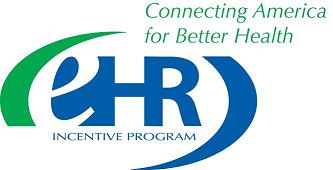 Dissecting Stage 2 of EHR Adoption
Dissecting Stage 2 of EHR Adoption
CMS has issued an FAQ to clarify stage 2 objective on transition of care. The core objective for EPs, eligible hospitals, and CAHs require those who transition their patient to another setting of care or provider of care or refers their patient to another provider of care to provide summary of care record for each transition of care or referral. The objective is measured in three ways:
- The EP, eligible hospital, or CAH that transitions or refers their patient to another setting of care or provider of care provides a summary of care record for more than 50% of transitions of care and referrals.
- The EP, eligible hospital, or CAH that transitions or refers their patient to another setting of care or provider of care provides a summary of care record either a) electronically transmitted to a recipient using CEHRT or b) where the recipient receives the summary of care record via exchange facilitated by an organization that is a NwHIN Exchange participant or is validated through an ONC‑established governance mechanism to facilitate exchange for 10% of transitions and referrals.
- The EP, eligible hospital, or CAH must satisfy one of the following a) conduct one or more successful electronic exchanges of a summary of care record with a recipient using technology that was designed by a different EHR developer than the sender’s, or b) conduct one or more successful tests with the CMS-designated test EHR during the EHR reporting period.
The question being addressed in the FAQ, asks in what ways can the second measure requiring more than 10% of the summary care records electronically be met? Here are their answers.
An EP, eligible hospital, or CAH could use 3 distinct approaches (which could also be used in combination) to meet this measure. The first two rely solely on the use of CEHRT, while the third is slightly different.
For the first two approaches, this measure can only be met if the EP, eligible hospital, or CAH uses the capabilities and standards included as part of its Certified EHR Technology (CEHRT) to electronically transmit summary care records for transitions of care and referrals (specifically those capabilities certified to the certification criterion adopted by ONC at 45 CFR 170.314(b)(2) “transitions of care – create and transmit transition of care/referral summaries,” which specifies standards for data content and transport).
For the third approach, the EP, eligible hospital, or CAH must use its CEHRT to create a summary care record for transitions of care and referrals, but instead of using a transport standard specified in ONC’s certification criterion at 45 CFR 170.314(b)(2) (included as part of its CEHRT) to electronically transmit the summary care record, the EP, eligible hospital, or CAH may use a NwHIN Exchange participant to facilitate the electronic transmission to the recipient. The NwHIN Exchange is now known as “eHealth Exchange” and a list of participants can be found here.
The following are more detailed explanations of each permitted approach. We also emphasize that regardless of the way an EP, eligible hospital, or CAH chooses to transmit the summary of care record, such a transmission will only count in the numerator if it is received by the provider to whom the sending provider is referring or transferring the patient.
- Use of the transport standard capability required for certification. As required by ONC to meet the CEHRT definition, every EP, eligible hospital, and CAH, must have EHR technology that is capable of electronically transmitting a summary care record for transitions of care and referrals according to the primary Direct Project specification (the Applicability Statement for Secure Health Transport). Thus, EPs, eligible hospitals, or CAHs that electronically transmit summary care records using their CEHRT’s “Direct” capability (natively or combined with an intermediary) would be able to count all such electronic transmissions in their numerator.
- Use of the SOAP-based optional transport standard capability permitted for certification. As part of certification, ONC permits EHR technology developers to voluntarily seek certification for their EHR technology’s capability to perform SOAP-based electronic transmissions. EHR technology developers who take this approach would enable their customers to also use this approach to meet the measure. Thus, EPs, eligible hospitals, or CAHs that electronically transmit summary care records using their CEHRT’s “SOAP-based” capability (natively or combined with an intermediary) would be able to count all of those transmissions in their numerator.
- Use of CEHRT to create a summary care record in accordance with the required standard (i.e., Consolidated CDA as specified in 45 CFR 170.314(b)(2)), and the electronic transmission is accomplished through the use of an eHealth Exchange participant who enables the electronic transmission of the summary care record to its intended recipient. Thus, EPs, eligible hospitals, or CAHs who create standardized summary care records using their CEHRT and then use an eHealth Exchange participant to electronically transmit the summary care record would be able to count all of those transmissions in their numerator.
We note that for this third approach, the regulation also permits an EP, eligible hospital, or CAH to count in their numerator instances where a summary care record for transitions of care or referrals was received via electronic exchange facilitated in a manner consistent with the governance mechanism ONC establishes for the nationwide health information network. ONC has not yet established a governance mechanism for the nationwide health information network. Until ONC establishes such a governance mechanism, this specific option will not be available.
